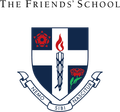TCE & IBDP Compared

TCE & IBDP Compared
Entry to a university in Tasmania, on the mainland, or overseas is possible with either the TCE or IB Diploma Programme.
The table below compares and contrasts the two programs as university entrance qualifications. Separate sections later in this online book give details of the structure and courses for each pathway.
Each of these programs has its own particular features and strengths. You will need to weigh up these relative strengths, particularly in relation to your own abilities, interests and aspirations for the future, in order to choose between them.
A change from one pathway to the other is feasible early in Year 11 (within the change of course timeframe). If this change is deemed appropriate, consultation with the student, their teachers and guardians will take place. In any event, we would need to consider the implications carefully at the time for each individual case.
International Baccalaureate (IB) Diploma | Tasmanian Certificate of Education (TCE) |
|---|---|
Designed as a package, with three common elements all IB students do, and a commitment to drawing all the elements together into a unified whole. Aims to educate the whole person. You do an English subject, a second language, and a Mathematical subject, as well as selections from the Humanities subjects, Science subjects, and Arts subjects to retain breadth and provide depth to your studies and keep your future options open. |
A ‘mix and match’ program, where each subject is chosen independently. This program is very open as to which courses can be selected, so it is quite possible to specialise in fields of particular interest. You must choose courses carefully to keep your options open. A wide range of TCE subjects are offered. Students are required to complete certain subjects to ensure they receive a literacy, numeracy and ICT tick in order to meet TCE requirements.
|
| Designed for students with an interest in developing international mindedness. Each course has a local and global context. | Designed for a Tasmanian clientele and hence some courses have more Australian or Tasmanian content.
|
| Requires the study of at least three subjects at Higher Level (240 hours), and three others at Standard Level (150 hours). All parts of the IB Diploma count towards university entrance, including Theory of Knowledge and the Extended Essay. | University entrance requires successful study of at least 4 (but usually 5) pre-tertiary (150 hour level 3 or 4) subjects, and completing both Year 11 and 12. Non pre-tertiary courses may be studied but will not count towards university entrance.
|
IB Diploma courses are studied over two years, with external exams and or folios at the end of Year 12 (although it is possible, even recommended, to take exams in one or two subjects at the end of Year 11).
| TCE courses are all one-year courses, usually with exams at the end of each year. A maximum of 2 subjects from Year 11 can be counted towards university entrance.
|
| External exams count for between 50% - 80% of the final result in most subjects, with the internal assessment based on a few set tasks with the majority being started in Year 11 and completed in Year 12. | Both continuous internal assessment and external exams are important elements of assessment in the TCE. It is important for students to do well in both internal and external components to ensure a strong final result.
|
| Requires students to be involved in a variety of co-curricular activities through the CAS program. | Students need not be involved in co-curricular activities, though ample opportunities exist to do so and students are strongly encouraged to undertake the requirements for the Clemes Certificate.
|
| Must be studied as a package – cannot be combined with other courses from outside the IB Diploma. | Friends require students to have a pathway plan beyond the particular subjects chosen. Can be combined with Vocational Education and Training (VET) courses.
|
Requires the payment of an additional Diploma Examination levy (spread out across the two years) to cover assessment by a team of international examiners.
| Particular subjects may attract a levy, though usually there is no general levy on top of normal Friends’ school fees. |
Recognised by all universities in Australia and the world. In Australia, as with all state qualifications, the Diploma score is converted to an ATAR equivalent score for use in entrance and scholarship decisions.
| Recognised and accepted by all Australian universities, and will be accepted by most international universities. |
